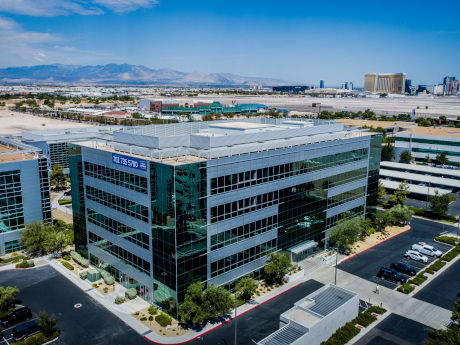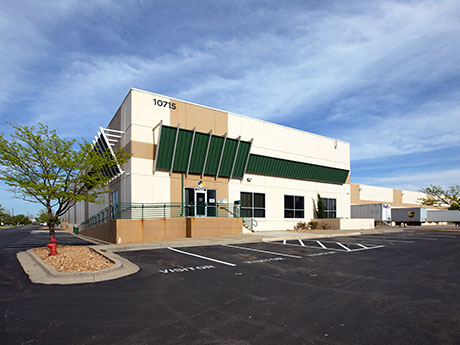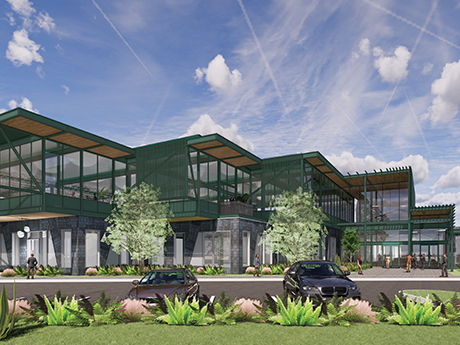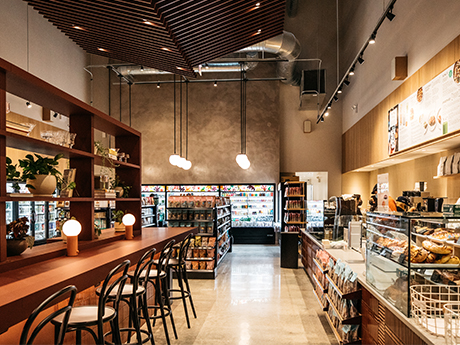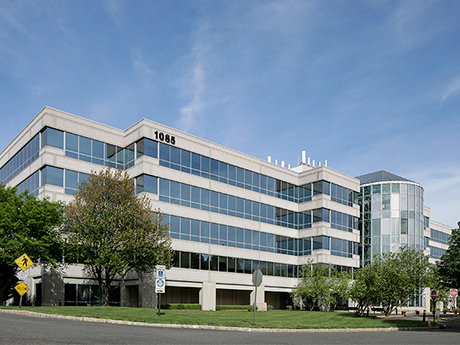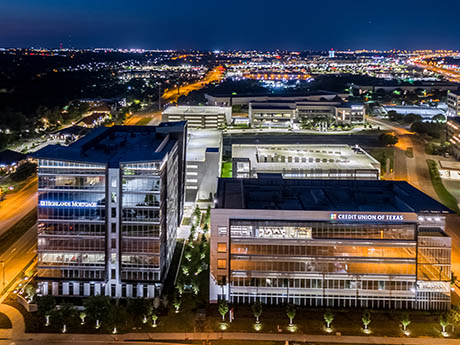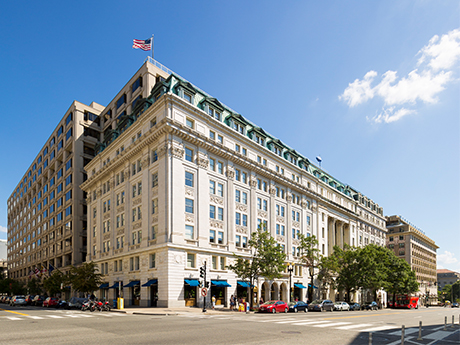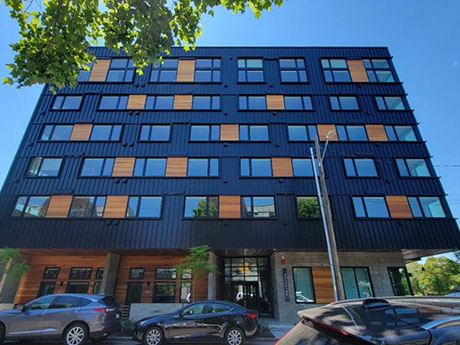By Patti Dillon, SIOR, Senior Vice President, Colliers While the key measures of the Southern Nevada economy have improved since the COVID lockdowns, some have improved more than others. The future of the office market is strong, but it will be weighted toward newer Class A mixed-use office assets. Employers are feeling the pressure to attract and retain the best talent in a tight labor market. There are plenty of vacant positions. However, available and willing workers are still scarce, which is driving the need for office locations of employers to be more inviting. According to DETR, Southern Nevada’s office job market added 24,000 jobs between May 2021 and May 2022. Unemployment in the Las Vegas-Paradise MSA was 5.2 percent in May 2022. Over the past 12 months, total employment in Southern Nevada increased by 87,100 jobs, a 3 percent increase. After experiencing a significant expansion last quarter, Southern Nevada’s office market cooled at midyear. Net absorption remained positive, at 45,443 square feet, but did not keep pace with the 129,272 square feet of new development. This lifted vacancy to 12.7 percent this quarter from 12.5 percent one quarter ago. Asking rental rates increased to $2.37 per square foot on a full-service …
Market Reports
By John Hassler, Newmark Zimmer At the close of 2022, Kansas City’s industrial property market hit heights that would have been unimaginable only a decade prior. While Kansas City ranks as the 31st-largest MSA in the United States by population, it is the 16th-largest market nationally based on industrial square footage with nearly 315 million square feet of total inventory. Further, Kansas City ranks 10th nationally in the percentage of annual net absorption as compared with its market size and has added an impressive 62.5 million square feet of newly developed square footage over the last 10 years. Many factors have contributed to the market’s growth trajectory including the nation’s most geo-central location (a two-day truck drive to 85 percent of the continental U.S. population), the confluence of five Class-1 railroads (with four area intermodal centers), the intersection of four of the nation’s busiest interstates (including I-35 and I-70), an available and reasonably priced workforce, an abundance of industrial development sites in pro-development communities, and an experienced, well-capitalized concentration of developers headquartered in the area. Kansas City has leveraged those various logistical and strategic advantages at a perfect time to capitalize on an all-time high in industrial space demand with …
Sustained leasing velocity for industrial/warehouse space in the Northern Virginia market, combined with the nearly insatiable demand for data center product, is contributing to developers repurposing existing business communities with this asset class to support demand, as well as companies expanding their geographic footprints into suburban Maryland and Central Virginia to secure space. This trend could be pivoting slightly due to the recent slowdown in leasing activity both locally and nationally as it relates to rising interest rates, the prospects for a looming recession and the possible end of a prolonged real estate cycle. The vacancy rate for industrial/warehouse space in the region currently stands at just over 2 percent. In the last quarter, the Northern Virginia industrial market experienced the largest pipeline in its history with more than 1 million square feet of space delivered, with nearly 5 million square feet of space in the development pipeline. The largest projects are contained within Stafford County as land in Loudoun and Fairfax counties has become unaffordable, or simply unattainable. Triple-net asking rents reached another all-time high of $12.45 per square foot in the third quarter, aided in part by these new deliveries. New space remains scarce and commands a premium, …
By Taylor Williams From small-scale refreshes of neighborhood shopping centers to massive conversions of regional malls, retail redevelopment has become a budding business as seismic forces like e-commerce and COVID-19 have fundamentally altered the ways in which Americans shop, dine and seek entertainment. Yet empirical and anecdotal evidence shows that people still love to frequent brick-and-mortar stores, restaurants and entertainment centers. According to data from Transwestern, at the end of the third quarter, Dallas-Fort Worth, Houston, Austin and San Antonio all had marketwide retail vacancy rates under 6 percent. Year-over-year vacancy contracted by anywhere from 80 to 130 basis points across the four major markets, all of which also experienced positive net absorption in the third quarter. While these Texas-specific numbers reflect a steady, sustained rebound for brick-and-mortar retail in the post-COVID era, preliminary data on holiday shopping indicates that e-commerce’s foothold on the market is getting stronger. According to Adobe Analytics, online sales during Black Friday topped $9.1 billion, a 2.3 percent increase over 2021. While that number should be judged against the fact that this year, the public health risk of shopping in physical stores was substantially reduced, it also represents a 21.7 percent increase over pre-pandemic online …
So much has been made about the future of retail in the United States. Is it dead? Is it back? How has it evolved? No doubt, retail was the sector most affected by the COVID-19 pandemic, and that is also true here in Washington, D.C. If you look at regional data, it appears to be rebounding nicely. The overall market currently boasts a near record-low vacancy rate at just 5.1 percent, according to CoStar Group. Tighter market conditions have helped landlords restore pricing power throughout the District, and asking rents and rent growth have surpassed pre-pandemic highs. When we measure by net absorption, retail demand in the region in 2022 is on pace to reach its highest level since 2016. But numbers don’t tell the whole story as the retail sector’s recovery in D.C.’s downtown market post COVID differs greatly from all of the metropolitan area’s other submarkets in a scenario that can only be described as a tale of two markets. Downtown D.C. So, what’s driving downtown retail these days? Simply, it’s the office market. Retail’s post-pandemic recovery is almost entirely dependent on office workers, and there is no more significant factor at play for its success than corporation’s …
By Guy Enriquez, Vice President, NAI Capital The market for small- to medium-sized multifamily buildings ranging from 10 to 100 units in the City of San Bernardino has experienced a severe downturn in sales transactions recently. This was caused by the rapid increase in interest rates and a disconnect between buyers and sellers on pricing expectations. Cap rates on sales completed in the third quarter of 2022 show an increase of about 80 basis points year over year to 5.5 percent in the Inland Empire. Third-quarter 2022 sales volume in the Inland Empire fell to 15 transactions totaling $54 million. The area has been averaging 37 transactions totaling $180 million on a quarterly basis over the past four quarters. This quarter, the City of San Bernardino saw one sales transaction in this segment of the market, indicating the lack of deal volume. While rising interest rates caused a collapse of sales volume, combined with other general economic factors, San Bernardino’s rental market has remained very strong. The city’s overall multifamily physical vacancy rate has stood at 3.2 percent throughout 2022. The average rent for a one-bedroom unit increased from $949 to $966 per unit during the first three quarters of …
By Ken Colao, president and CEO, CNY Group Whether you’re on the Jersey Parkway or the Turnpike, you’ve undoubtedly driven past commercial buildings and office parks that have stood in the Garden State for decades. But the age of many of these structures is starting to cause problems. Earlier this year, JLL released a report in which the real estate firm estimated that 57 percent of suburban office space nationwide is old enough to be considered functionally obsolete. In New Jersey, specifically, that figure rises to 72 percent, among the highest in the nation. Based on two decades worth of construction experience in New Jersey and New York, CNY Group believes the two most likely outcomes for these structures involve upgrades to true Class A offices or conversion to life sciences facilities. Keeping Offices Intact With a growing number of people migrating out of urban cores, suburban office developers are revitalizing their properties to attract new tenants. When employees began moving away from city centers, employers didn’t particularly follow them, but that trend could change. Businesses will decrease their real estate footprints in urban areas unless costs of occupancy are reduced, safety is maintained and environmental standards and practices are …
By The Allen Economic Development Corp. Austin is often in the spotlight as one of the country’s top tech hubs, but Allen, a growing suburb located north of Dallas, has emerged as a mini tech hub in its own right. Most recently, the Allen Economic Development Corp. (AEDC) announced that Pushpay, a provider of payments and engagement solutions for faith-based and nonprofit businesses, has signed a lease at One Bethany West as the company looks to expand its presence in North Texas. Pushpay is one of several companies that has in recent years discovered that Allen has the right combination of qualities and amenities to support tech companies seeking a new home. Pushpay is one of several companies that has in recent years discovered that Allen has the right combination of qualities and amenities to support tech companies seeking a new home. Pushpay will occupy 10,000 square feet of office space in the 17-acre Watters Creek campus, which will be accessible to its employees in the metroplex, many of which include associates from its subsidiary, Resi Media. “Pushpay and Resi are the perfect additions to the growing roster of tech-focused companies in Allen,” says David Ellis, assistant director at AEDC. …
Downtown Washington, D.C., is confronting many of the same pandemic-generated challenges as other urban markets across the United States. This includes above-average and record high commercial vacancy (office and retail), as well as lower-than-average daytime foot traffic, in part due to an increase in hybrid work. Yet there is a case to be made that now is a unique moment for leasing office (and retail) space in the District’s central business district (CBD). The loss of foot traffic has hit downtown retail particularly hard, especially fast-casual dining. Coffee shops and sandwich places that depend on office workers have closed at a higher rate than other food-related retail. But the pedestrians are coming back. Kastle Systems’ data from the DowntownDC Business Improvement District (BID) shows an increase since Labor Day in the number of workers at their desks, with approximately 42 percent of the pre-pandemic number of employees in-office on a weekly basis, compared with around 33 percent last spring. This is expected to rise as more employers establish return-to-office policies. Despite 2022’s turbulent economy over the first six months, D.C.’s office leasing activity was up 16 percent compared with the first half of 2021, according to Cushman & Wakefield. The …
It’s been quite the run for Seattle. Like many secondary markets out West, the Emerald City was a pandemic darling, racking up loads of new residents and workers over the past few years. Seattle-area employers added more than 102,600 workers in 2021 alone, according to Marcus & Millichap’s second-quarter market report, which predicts the area will add another 85,000 workers by year’s end. The report also forecasts Seattle’s population will increase by more than 220,000 residents over the next five years. All this activity has led to a bull run for multifamily owners, investors and developers. Net absorption in Seattle’s central business district surpassed the 5,000-unit mark for the first time on record last year, while rents have risen by 14 percent year over year. Demand was so fierce that all 20 of the metro’s submarkets recorded vacancy compression over the past four quarters, resulting in an average 2.8 percent vacancy rate, according to Marcus & Millichap. This is the lowest rate in two decades. Nearly 9,000 units — representing 1.9 percent of the supply — were added over the 12-month period that ended in March, with another 25,000 units still under construction at the end of the second quarter. …


